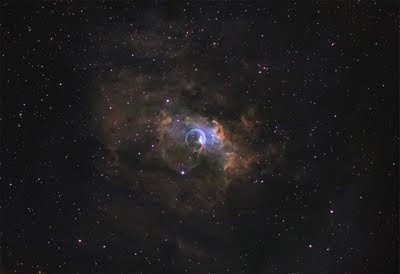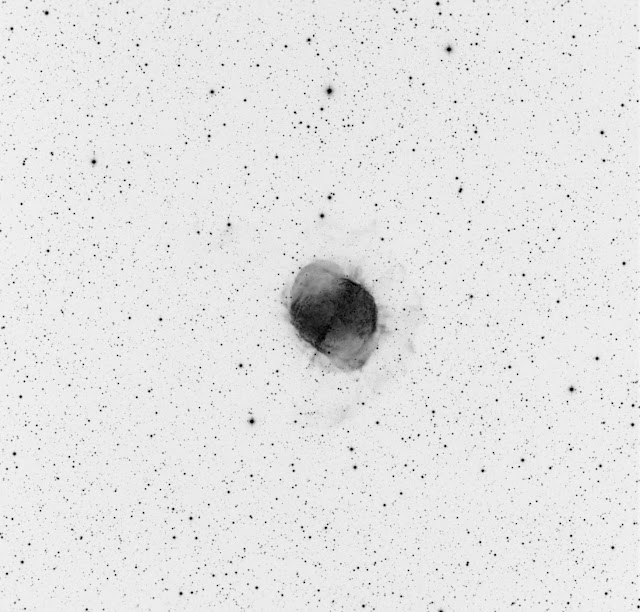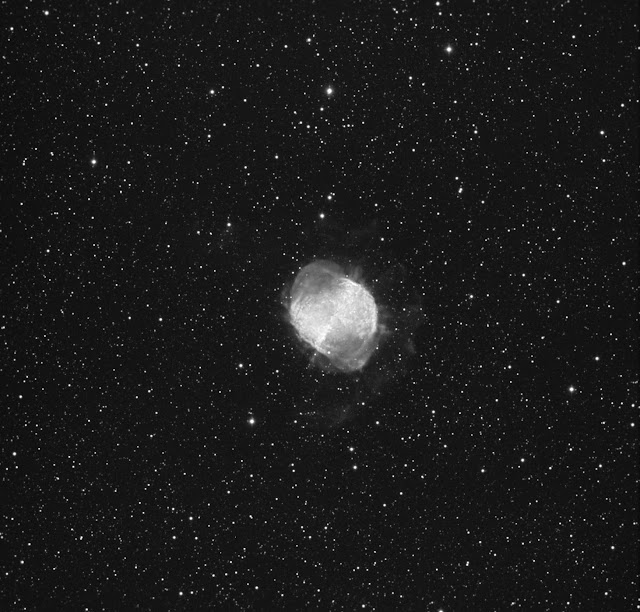The Dumbbell Nebula (also known as Messier 27, M 27, or NGC 6853) is a planetary nebula (PN) in the constellation Vulpecula, at a distance of about 1,360 light years.
This object was the first planetary nebula to be discovered; by Charles Messier in 1764. At its brightness of visual magnitude 7.5 and its diameter of about 8 arcminutes, it is easily visible in binoculars, and a popular observing target in amateur telescopes.
W.O FLT110 with dedicated TMB field flattener
FeatherTouch 3'' focuser
Starizona MicroTouch autofocuser
W.O ZS80 ED
SBIG ST10XME CFW9
Meade DSI
Filters: Ha 5nm Astrodon_RGB Baader Planetarium
Sky-Watcher EQ6 Pro
L(Ha+Red)_Red(Ha+Red+Red)_Green_Blue
Ha:10*5min bin1x1_46*10min bin1x1
Red:28*4min bin1x1
Green:29*4min bin1x1
Blue:25*4min bin1x1
Total exposure time:13h58min
For full resolution please see in Astrobin
Red:28*4min bin1x1
Green:29*4min bin1x1
Blue:25*4min bin1x1
Total exposure time:13h58min
For full resolution please see in Astrobin

















